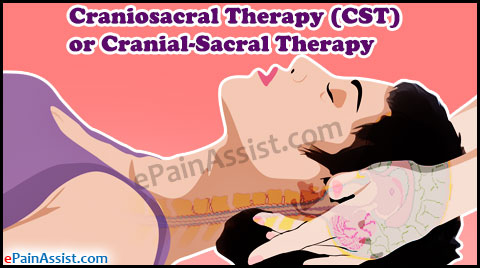What is Craniosacral Therapy?
Craniosacral therapy (CST) or cranial-sacral therapy was developed by Dr. John Upledger in 1983. It is basically based on osteopathy in cranial field or OCF, which was developed by William Garner Sutherland in 1899. Craniosacral therapy (CST) is a type of alternative therapy used by chiropractors, naturopaths, massage therapists, occupational therapists and physiotherapists. In USA, only fully licensed physicians are able to practice osteopathy in cranial field (OCF) while in some other states dentists or licensed naturopathic physicians are allowed to practice it. Cranial osteopathy is thought to be an extension of osteopathic medicine. Therefore, its training is strictly planned by the osteopathic medical profession and its governing bodies.

According to critics, craniosacral therapy is pseudoscience and is thought to be quackery. There is no medical evidence to support its effectiveness.
History of Craniosacral Therapy
The developer of Cranial Osteopathy was an Osteopath whose name was William Sutherland. This was done somewhere between 1898 and 1900. While observing a disarticulated skull, William Sutherland was hit by the idea that the cranial sutures of temporal bones where they are connected to the parietal bones had a slanted surface similar to the gills of a fish, indicating articular mobility for respiratory mechanism.”
From the years 1975 to 1983, osteopathic physician Dr. John E. Upledger along with neurophysiologist and histologist Dr. Ernest W. Retzlaff collected a research team for investigating the alleged pulse and to study more of the Sutherland’s theory of cranial bone movement. Later on both Upledger and Retzlaff published their results that they supported the concept of cranial bone movement as well as the concept of cranial rhythm. Subsequent reviews of their studies have established that their research is of inadequate quality for providing the definite proof of the craniosacral therapy effectiveness and the presence of cranial bone movement.
Biodynamic Craniosacral Therapy
Life is expressed as motion. At a profound level, our bodies physiological functioning, living tissues “breathe” subtly along with the motion of life. This event results in rhythmic impulses, which can be felt or palpated by sensitive hands. Dr. William Sutherland discovered the existence of these subtle rhythms in the body more than 100 years ago following an amazing perception which he had during the examination of the specialized articulations of cranial bones. As opposed to popular belief, Dr. Sutherland gathered that cranial sutures were structured to have minor degrees of motion. It took him many years of research to demonstrate the presence of this motion and he ultimately came to the conclusion that this motion is basically produced by the body’s fundamental life force, which he stated as the “Breath of Life.” Moreover, Dr. Sutherland also discovered that the motion of cranial bones is closely linked to subtle movements, which comprise of a network of interrelated tissues and fluids at the center of the body; including the cerebrospinal fluid, the central nervous system and the membranes surrounding the central nervous system and the sacrum.
The chiropractor or the therapist gently palpates the patient’s body and concentrates carefully on the transmitted movements. The therapist tries to be in harmony with the patient. Patients report feeling deeply relaxed during and after the completion of the treatment session. Patients may also feel light-headed. This is generally linked with increase in endorphins; however, according to the research, these effects may be due to the endocannabinoid system. There are also some reports of unfavorable response from craniosacral therapy treatment.
